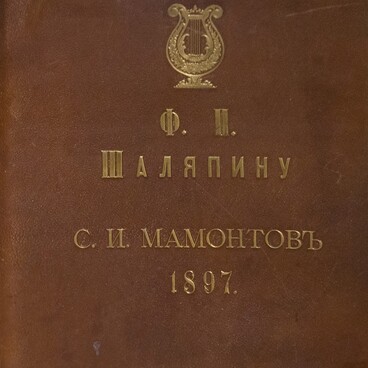The Russian National Museum of Music houses a mantel clock by the British maker E. Norton that belonged to the great Russian bass Feodor Ivanovich Chaliapin. The singer’s daughter Irina Feodorovna Chaliapina-Baksheyeva donated this clock to the Feodor Chaliapin Estate Museum on Novinsky Boulevard in 1978. Such clocks are notable for their historical and artistic value and reflect both the style of the era and the owner’s taste.
Feodor Chaliapin’s clock was performed in the Rococo style. It is a rectangular wooden cabinet covered with black lacquer and crowned with five bronze vases. The clock’s front door and side walls with arched apertures are glazed. The elegant cabinet is adorned with four legs shaped like paws, inserts with reliefs of heads of children in the apertures and onlays on the dial plate.
This decorative interior design item made of yellow metal is equipped with all the necessary horological features. Clocks were a luxury, so they served not only as decoration, but also as a music box, which played melodies that were often written by the leading composers of the era. Every quarter of an hour, a gentle melody was played, which lengthened every 15 minutes and was accompanied by a chime every full hour.
Eardley Norton was a talented English watchmaker of the second half of the 18th century, who patented a repeater — a complex mechanism that chimes the hours audibly at the press of a button. It was especially convenient at night in order to know the time without lighting a candle. In the 19th century, repeaters came in various types. At the peak of their popularity, they had grown to symbolize the era and were reflected in Russian classical literature. For example, in “Eugene Onegin, A Novel in Verse”, the eponymous protagonist wore a Breguet watch, which was based on the one that the author Alexander Sergeyevich Pushkin had. The unique sound of repeaters was also appreciated by Russian composers, for example, Pyotr Ilyich Tchaikovsky.
Feodor Chaliapin’s clock was performed in the Rococo style. It is a rectangular wooden cabinet covered with black lacquer and crowned with five bronze vases. The clock’s front door and side walls with arched apertures are glazed. The elegant cabinet is adorned with four legs shaped like paws, inserts with reliefs of heads of children in the apertures and onlays on the dial plate.
This decorative interior design item made of yellow metal is equipped with all the necessary horological features. Clocks were a luxury, so they served not only as decoration, but also as a music box, which played melodies that were often written by the leading composers of the era. Every quarter of an hour, a gentle melody was played, which lengthened every 15 minutes and was accompanied by a chime every full hour.
Eardley Norton was a talented English watchmaker of the second half of the 18th century, who patented a repeater — a complex mechanism that chimes the hours audibly at the press of a button. It was especially convenient at night in order to know the time without lighting a candle. In the 19th century, repeaters came in various types. At the peak of their popularity, they had grown to symbolize the era and were reflected in Russian classical literature. For example, in “Eugene Onegin, A Novel in Verse”, the eponymous protagonist wore a Breguet watch, which was based on the one that the author Alexander Sergeyevich Pushkin had. The unique sound of repeaters was also appreciated by Russian composers, for example, Pyotr Ilyich Tchaikovsky.



